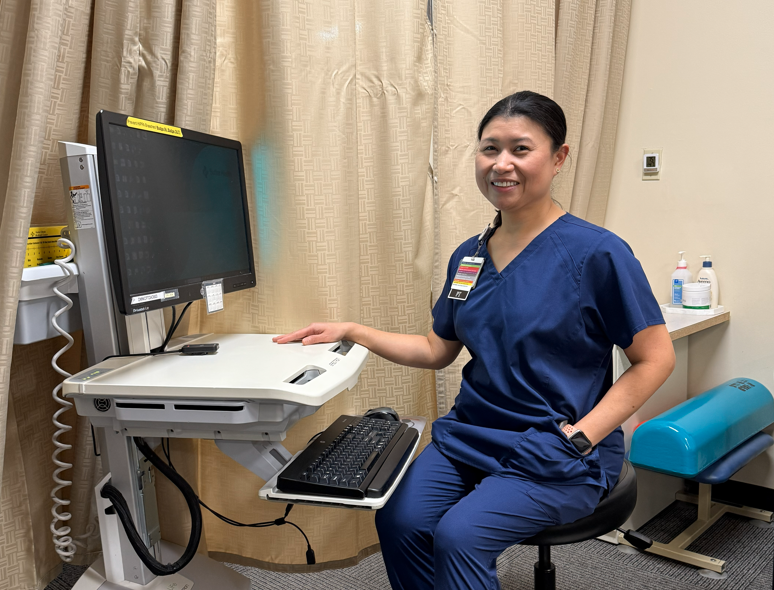Investigators at Sutter Health aim to close care gaps, first to test performance of the AHA’s PREVENT Equations among Asian and Hispanic subgroups using real-world data
NORTHERN CALIF. – Cardiovascular disease risk prediction models have improved the ability to stratify adults across the disease’s risk spectrum. Researchers at Sutter Health and colleagues at Stanford University tested the performance of the American Heart Association’s equations predicting the risk of cardiovascular disease events, called PREVENT, in the six largest Asian subgroups as well as in Mexican and Puerto Rican Hispanic subgroups.
The findings, published June 25 in JAMA Cardiology, showed the PREVENT equations accurately predicted cardiovascular disease, atherosclerotic cardiovascular disease – the buildup of plaque in arteries – and heart failure events across broad, self-identified Asian and Hispanic patient populations.
The burden of heart disease, one of the biggest health problems in the United States, is likely to grow as the population gets older. Making sure risk tools work for all patients is key to giving the best care possible, researchers say.
Advancing Cardiovascular Health for All
“We led this study to uncover findings that may inform better cardiovascular healthcare for all. In the original validation, PREVENT equations demonstrated good discernment and calibration among racial and ethnic groups, but the model performance among Asian and Hispanic subgroups had not been previously described,” said Xiaowei (Sherry) Yan, senior scientist at Sutter Health’s Center for Health Systems Research and first author of the study. “Our findings showed the PREVENT models performed well across multiple subgroups, with modest variation across individual Asian and Hispanic populations.”
Study Overview
Yan and colleagues conducted an electronic health record–based retrospective cohort study of 361,778 primary care patients aged 30 to 79 years across Sutter Health — a large integrated health system in Northern California caring for more than 3.5 million patients across urban, suburban and rural communities — from January 2010 to September 2023. Patients who had at least two primary care visits during the study period were eligible for the study. Among patients who met the inclusion criteria, the mean age was 54.6 years; 53% were female; 22% were non-Hispanic Asian and 11% were Hispanic.
Key Findings
Results showed the PREVENT equations appropriately predicted risk in contemporary diverse Asian and Hispanic subgroups with modest variation in performance across the subgroups studied.
- Over a mean follow-up of 8.1 years, there were 22,648 (6.3%) cardiovascular disease events among study subjects.
- The predictive accuracy, as demonstrated through use of statistical measures such as the C-statistic and calibration slope, was high for the outcome of total cardiovascular disease among the Asian and Hispanic populations.
- When examined among the subgroups studied, predictive accuracy for total cardiovascular disease remained high.
- There were small differences in the performance of atherosclerotic cardiovascular disease and heart failure PREVENT equations among racial and ethnic groups and subgroups.
The Path Forward
“The burden of cardiovascular disease and its risk factors is projected to increase across the U.S. in the coming decades, so the ability to more accurately estimate the disease’s risk in all the communities we serve is more critical now than ever. Although best practices for clinical implementation of the PREVENT cardiovascular disease risk prediction models should be further investigated, we believe they are an important step forward for communities that have been historically underrepresented in cardiovascular disease research,” said Dr. Powell Jose, Sutter Medical Group cardiologist and section chief of general cardiology for Sutter’s heart and vascular service line.
Yan, Dr. Jose and colleagues shared study limitations: They were unable to fully examine all Asian and Hispanic subgroups. Moreover, comparisons of predictive utility of PREVENT and pooled cohort equations were limited by small sample sizes in the Mexican and Puerto Rican Hispanic subgroups.
To better inform clinical application of the study findings, future work may focus on providing clinically sensible cutoffs based on PREVENT atherosclerotic cardiovascular disease risk to guide treatment decisions.
Research at Sutter Health
Sutter Health conducts hundreds of clinical trials as well as digital and health systems studies across its not-for-profit healthcare system dedicated to providing comprehensive care throughout California. Committed to advancing innovative patient care, healthy outcomes and community partnerships, Sutter Health is pursuing a bold new plan to reach more people and make excellent healthcare more connected and accessible. Currently serving more than 3.5 million patients, thanks to our dedicated team of more than 57,000 employees and clinicians, and 12,000+ affiliated physicians, with a unified focus on expanding care to serve more patients.
Sutter delivers exceptional and affordable care through its hospitals, medical groups, ambulatory surgery centers, urgent care clinics, telehealth, home health and hospice services. Dedicated to transforming healthcare, at Sutter Health, getting better never stops.
Learn more about how Sutter Health is transforming healthcare at sutterhealth.org and vitals.sutterhealth.org.
For more information about research at Sutter, visit sutterhealth.org/research.





